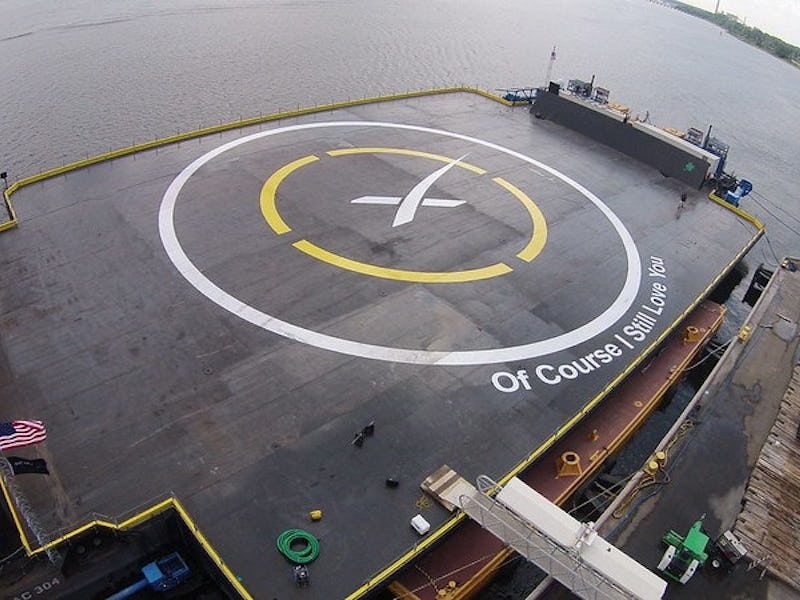SpaceX: watch the iconic Falcon 9 landing that started a new era
This month marks five years since SpaceX first landed a Falcon 9 rocket on a drone ship.

On April 8, 2016, SpaceX rewrote the rules on spaceflight.
This month five years ago, the space-faring firm successfully landed a Falcon 9 booster on a drone ship after launch. The feat marked the start of a new era for SpaceX, one where booster landings are commonplace.
“For the first time in my life, I felt as though I had seen something as revolutionary as the Moon landing,” Eric Berger, senior space editor at Ars Technica and the author of Liftoff: Elon Musk and the Desperate Early Days That Launched SpaceX, tells Inverse.
Want to find out more about how observers remember the day, how it shaped perceptions of SpaceX, and how Musk responded to a post-launch question about colonizing Mars? Read the full interview, only in MUSK READS+.
SpaceX’s press pack for the mission that day explained that a Falcon 9 rocket would send the Dragon capsule from Space Launch Complex 40 at Cape Canaveral Air Force Station in Florida. The rocket would send a Dragon capsule to the space station containing around 7,000 pounds of supplies, as part of the eighth Commercial Resupply Services mission.
A successful launch would be an improvement over the previous mission. SpaceX’s CRS-7 flight in June 2015 ended in disaster. Theodore Kim, a videographer that saw the launch, told Inverse in June 2016 that “all the stuff on board basically vaporized.”
But beyond simply launching successfully, the press pack also outlined another goal for the CRS-8 mission. The booster would attempt to land on the Of Course I Still Love You drone ship, stationed in the Atlantic Ocean.
A successful landing would help SpaceX reduce the cost of spaceflight. SpaceX CEO Elon Musk claimed in 2013 that the booster accounts for around three-quarters of the launch’s total price tag. An earlier version of SpaceX’s website listed the price tag at $62 million.
Parking a small drone ship in the sea sounds needlessly complicated, but it enables rockets to move even faster during launches. Musk explained on his Twitter page in January 2016 that a booster can’t land on a ground-based launch site if it’s traveling faster than 6,000 kilometers per hour when the rocket’s stages separate. A drone ship landing enables the rocket to move up to 9,000 kilometers per hour at the time of separation.
Space reporter Robin Seemangal tells Inverse that the drone ship landing that day was “even more of an afterthought” because of the CRS-7 failure — which is what made the events of that day all the more jaw-dropping.
TO READ THE FULL INTERVIEW, SUBSCRIBE TO MUSK READS+.
Here is what you will gain from subscribing to MUSK READS+:
- Three emails per week, enabling fans to go deeper into the week’s news.
- Original interviews and reporting, longform analysis, previews and recaps of major events, including earnings calls and more.
- Community-focused extras like responses to reader mail, an upcoming event calendar, and notable anniversaries.
- An archive of previous subscriber-only content, so you can easily read back over what you might have missed.
- Promotional deals and offers.
- Supporting original, independent journalism.
MUSK READS+ is a fully independent operation. We are not Elon Musk, nor are we employed by him. Our job is to report the events we find newsworthy, giving you the inside look at the worlds of space rockets, electric cars, clean energy, and more. It means first-hand accounts of a SpaceX rocket launch, Tesla insights from third-party analysts, and more.
If you want to support us in our mission, and receive original interviews and analysis, consider contributing with a subscription.